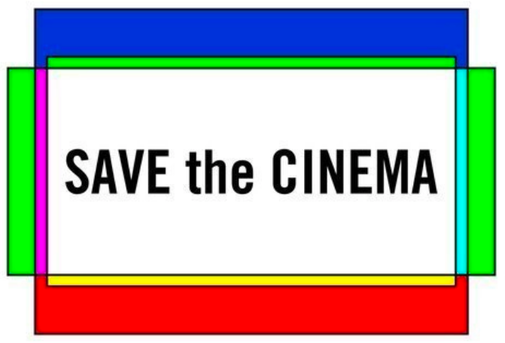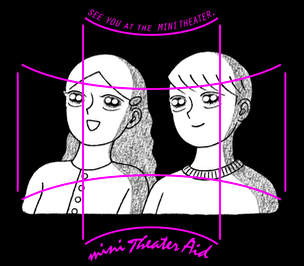
When there is a world historical event, it is best to write down your experiences, if only to help you remember. As that time becomes more remote, it can become more difficult to access. Perhaps writing about the COVID-19 pandemic from the perspective of Japanese media studies can help me—and maybe others—connect to that time at some future date.
The remoteness is not only temporal. It was probably appropriate that I experienced the novel coronavirus’s affect on the Japanese film and TV industries remotely in space. Still teaching at Yale, I could only read about the closings of theaters and the cessation of filming through news articles and postings on social media. There were ways of watching Japanese television, so I could see how certain shows were changing production, but initially that was not the case with cinema.
Theater closings occurred much sooner in Connecticut than in Japan, with the governor issuing the order on 16 March 2020. There was thus a strange disconnect between what I was experiencing and what friends in Japan were writing about. Everything was closing down here, while Japanese colleagues were arguing that the ventilation in theaters was fine and patrons were safe with just masks and hand-sanitizer. It reminded me of the cultural valences of disease, as few tried to defend movie theater ventilation in the States—and few in the West advocated for face masks. Still, fears about the virus were already affecting movie attendance everywhere.
With emergency declarations being issued for Tokyo, Osaka, and other large urban areas on April 7, the affect on the film industry initially centered on theatrical exhibition. Not only the big cineplexes, but also many of the arthouses—especially the mini-theaters—had to shut their doors temporarily. The large chains, mostly backed by the large studios and their partners, could probably handle the loss, but small theaters likely could not.
Many organized to help these theaters. The film director Irie Yu was one of the first out of the gate, creating a list in a blog post of small theaters that you could support by becoming a member or by buying goods (I finally became a member of Yokohama’s Cinema Jack and Betty). Theaters also organized, as Kansai area theaters then started the crowdfunding campaign “Save Our Local Cinemas,” which sold T-shirts and collected donations (13,227 shirts were bought in the end). Under the hashtag #SaveTheCinema (the logo is above), many major figures in Japanese film, including Koreeda Hirokazu, Suwa Nobuhiro, Iura Arata, Arai Haruhiko, Tsukamoto Shinya, Tsuchiya Yutaka, Funahashi Atsushi, and Mori Tatsuya started a petition drive (here on Change.org) to ask the Japanese government to subsidize theaters who could go out of business because of the health orders by authorities.

Arguably the largest drive was Mini-Theater AID, spearheaded by directors Fukada Koji and Hamaguchi Ryosuke. Working through a Motion Gallery crowdfunding page, the drive began on April 13 and ended on May 15 (it had to be extended because of an overloaded server at the end), and ended up collecting ¥331,025,487 from 29,926 donors. The 117 participating theaters would receive about ¥3,060,000 each (which admittedly only makes up a fraction of what was lost, according to Uplink’s Asai Takashi, who was the most vocal of the mini-theater owners).
Later other funding drives were begun for small film distribution companies (such as the Help the Distributors project), as well as for performers and staff.
The argument for helping theaters certainly underlined the fact that it is small houses that most offer the variety of indie or art films that multiplexes have ultimately not provided. But many asserted mini-theaters needed to be saved to preserve the experience of watching cinema in a group of cinema lovers. The perhaps cruel irony of the pandemic was that many had to turn to online streaming not just to keep watching films, but to even help theaters stay afloat. Uplink highly promoted its online service, Uplink Cloud, and the film distributor Tofoo Films started the Temporary Cinema project, which streamed its films online—such as Soda Kazuhiro’s Seishin 0—with half the viewing fee going to the theater they were originally supposed to play at (you could select the theater when buying the ticket).
Tofoo underlined that this was a temporary cinema, to last until the theaters reopened, but one wonders the affect of the pandemic will be on film viewing. It took a while for Hulu and Netflix to make waves in Japan, but there is as yet no equivalent of the Criterion Channel. It was interesting to see some of the live performing arts running to streaming during the pandemic. As a rakugo fan, I was thrilled when Shunputei Ichinosuke started streaming live the rakugo performances he would have done at Tokyo yose (vaudeville halls) if not for the fact they had closed due to the emergency order (you can check out his very entertaining—and also educational—videos here). He might not have been the first, but suddenly it seemed that all the rakugoka, especially the younger ones, were either live streaming performances or, like Yale-grad Tatekawa Shinoharu, expanding their YouTube presence (Shinoharu’s channel features some of his English rakugo). They were either selling tickets (some sent out Zoom passwords if you paid) or using YouTube or other sites to accept donations. Haremame, the live house where I did the Conversations in Silence film series with Kataoka Ichiro and Kikuchi Naruyoshi (such as here, here, and here), was also forced to close and started streaming events as well. I saw my favorite rakugoka Yanagiya Kyotaro perform at Haremame live from my living room in Connecticut (and he’s doing it again on June 18). I had the feeling that it wasn't only one rakugoka who realized one could sell a lot more tickets when not confined to a particular live space. And while rakugo has been on TV since the beginning, now the channels belonged to the rakugoka.
It seemed as if the convoluted spatiality of modernity had come to the fore. The pandemic had resurrected a former spatiality, as books on past plagues or articles on the beneficial know-how of measures against the Spanish Flu became popular, and we also were asked to confine ourselves to smaller spaces. I frankly did not leave my “village” for over a month. Yet from my village, I could gleefully watch an art (rakugo) that is best when live, while also remotely advocating for preserving the unique experience of going to small art-house theaters. I just saw that filmmakers Arai Haruhiko, Mori Tatsuya, Shiraishi Kazuya, and Inoue Jun’ichi are banding together to offer talk events in mini-theaters (common in Japan after film screenings) via live streaming—projected in the theaters for real audiences. It feels as if multiple spaces and temporalities are interweaving in a most discombobulated manner.
Media producers were trying to live in this spatiality too. While one didn’t see the late night shows being broadcast from the MC’s houses (a la Colbert or Myers), social distancing did hit Japanese TV. News announcers sat further apart, and guests appeared on a monitor not in person. Variety TV is founded on close interactions between tarento in a particular space (either the studio or an external location), so many had to resort to reruns or compilations of previous shows. Prebato (which features tarento getting judged on their haiku or watercolor paintings) tried to make due with a few tarento in studio and the others on large monitors, yet they edited it and designed space in such a way that, while occasionally joking about the social distance, nonetheless did their best to forget anything was different (Umezawa and Natsui-sensei could trade barbs as they always did, whether they were both in studio or in different prefectures, because that’s the way the show was edited from the start). I noticed this with American late night shows, but it seemed these remote productions—from the rakugoka YouTube channels to late night owarai shows—where stylistically looking more and more like YouTube shows. Genres and media were complexly interweaving as well.
Production of dramatic TV and film also largely stopped. NHK had enough episodes of the Asadora and Taiga Drama in the can to last until the end of the emergency declaration, but both series will have to stop for a while since filming had ceased during the pandemic. On May 14, Eiren issued guidelines for resuming film production during the pandemic.
Nevertheless, there were a number of efforts to produce work during the emergency period. Perhaps most famous was when Ueda Shin’ichiro recalled the cast of One Cut of the Dead to make One Cut of the Dead: Mission Remote, a 26-minute video in which the same characters from the film have now been charged to make a TV pilot remotely. The now ubiquitous Zoom screen with multiple faces becomes the dominant trope of works like this, though this one explored the difference between TV and Zoom, just as the film played out the boundaries between TV and film. The Stay Home Mini-Theater project, involving Saitoh Takumi, Akiyama Yuzuki, Ito Sairi, and others, also made films in the “telework” style in addition to showing other films online to support mini-theaters. Fukada Koji’s The Yalta Conference Online (shown as part of the We Are One festival) also utilized the Zoom format to satirize not only WWII geopolitics, but also the identities of time and geography.
The group Shinpa started an “at-home movie project” that resulted in about two-dozen films, including Fukada Koji’s move/2020 and Emoto Tasuku’s Amazon. While some were edited like a normal film, these two works revealed another frequent trope: the camera frame confined to a particular space or angle, a restrictedness often emphasized through longer takes, or through editing which does not free up space. This certainly could arise from the simple fact of lockdown, but the choice was to re-engage with the time and space of the stay-at-home domestic everyday, in both its strictures and possibilities.
Iwai Shunji’s contribution to the Kaiju Defeat Covid series also limited itself to the domestic long take. Higuchi Shinji’s initial call for the series produced a pandemic-era version of the videos in which an action like a kick at the camera is “passed on” (like a virus?) to another through an edit (Hollywood stuntmen and stars like Scarlett Johansson participated in some of those). Titled “Capsule Kaiju Project”, his 26-episode series featured people who answered a call for videos of themselves “catching” and “passing on” a kaiju (here’s Episode 1). Iwai made his version a video diary, as actor Saitoh Takumi addresses the camera and in each episode, released one a day at the same time, describes the growth of a capsule kaiju he bought, complete with some of the ethical dilemmas—evident in the title “A 12-Day Story of a Monster that Died in 8 Days”. The made-at-home aesthetic combines with the problem of personal responsibility and social ethics.
There were certainly warnings in Japan as well that the pandemic potentially might spell the end to cinema in the theater, or that economically COVID-19 might end up putting many smaller theaters out of business. But the pandemic also clearly has foregrounded many of the contradictions of space and time that were already festering in the multi-media ecology of movies and the internet. It brought forth new pleasures and pains, as well as a creative fervor to begin exploring the conundrum of confinement in an media environment of remote access to seemingly anywhere. It will be interesting to see how such ideas play out when filmmakers can actually begin filming on location again. And what remote spectators like me will think about it—perhaps from a moment remote in time.

